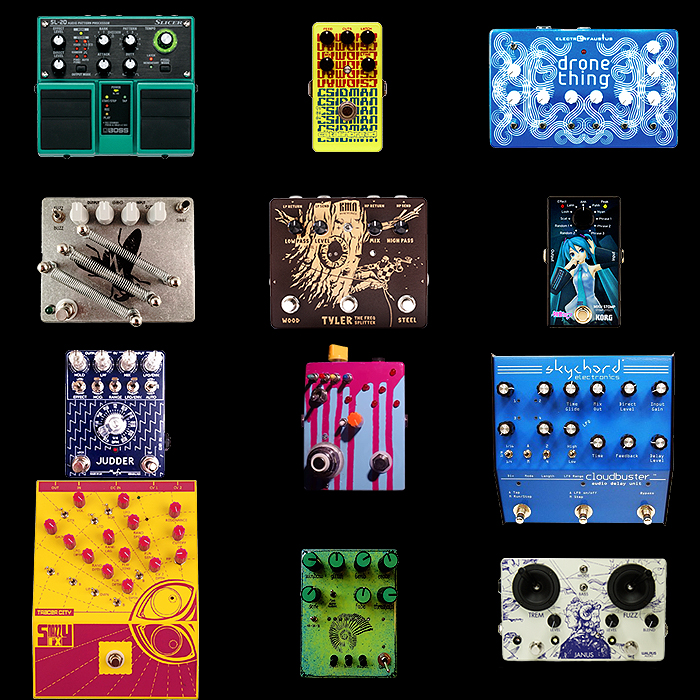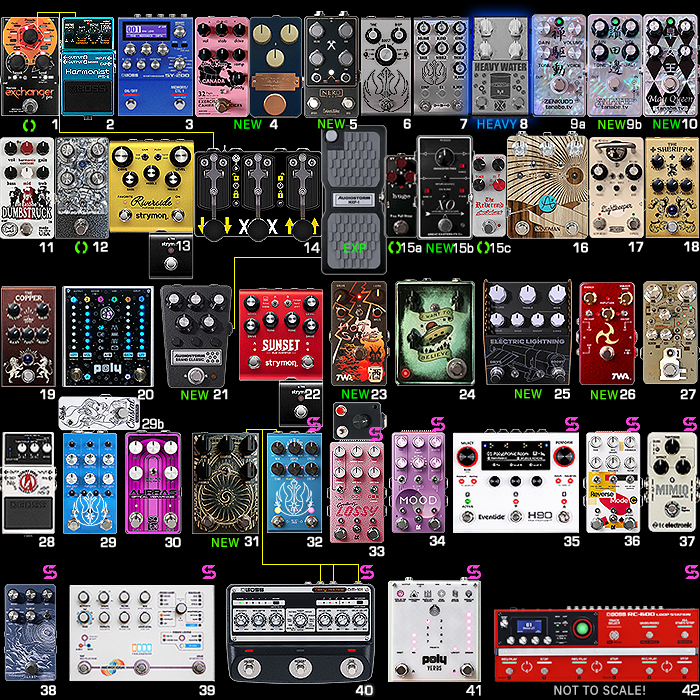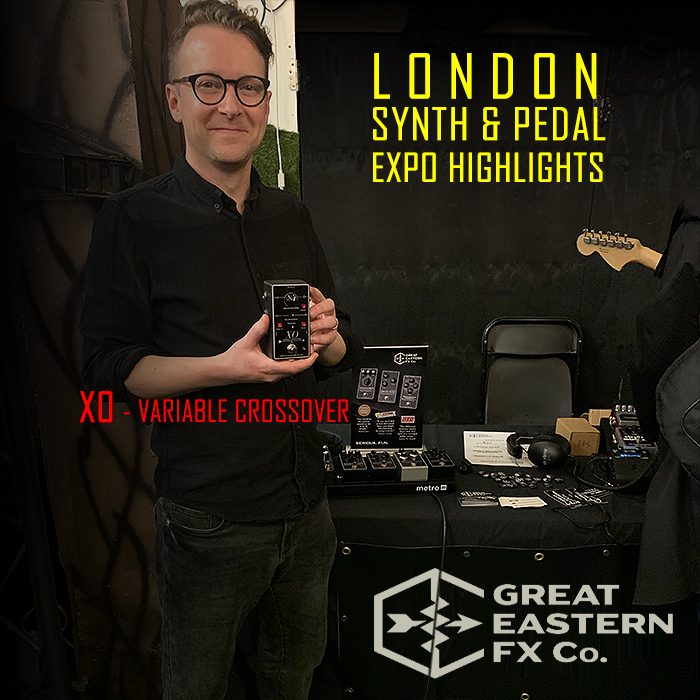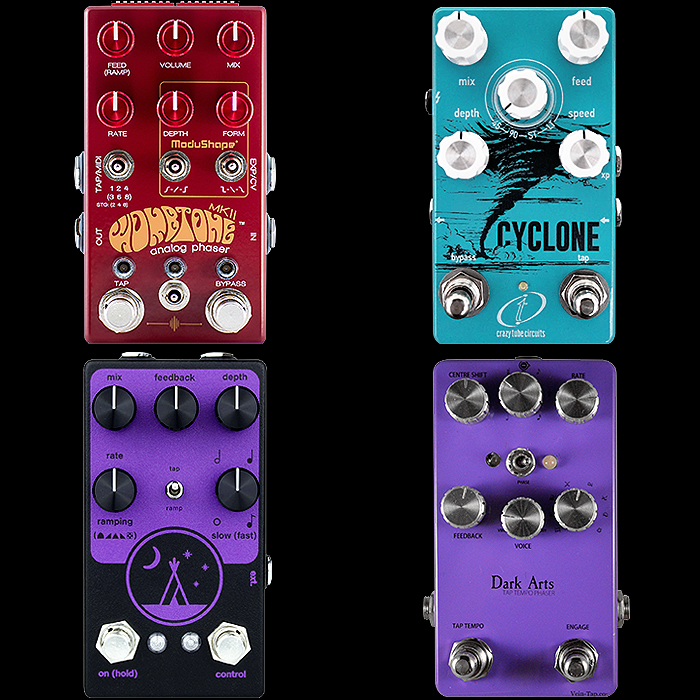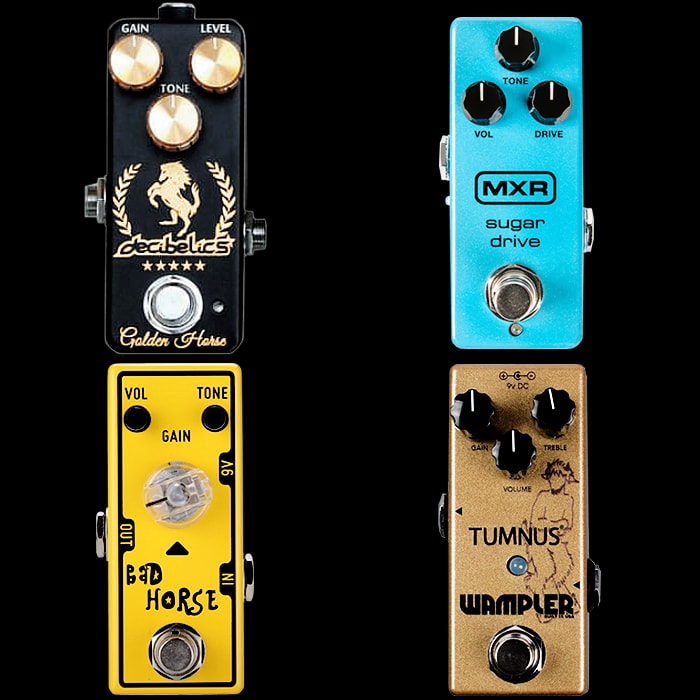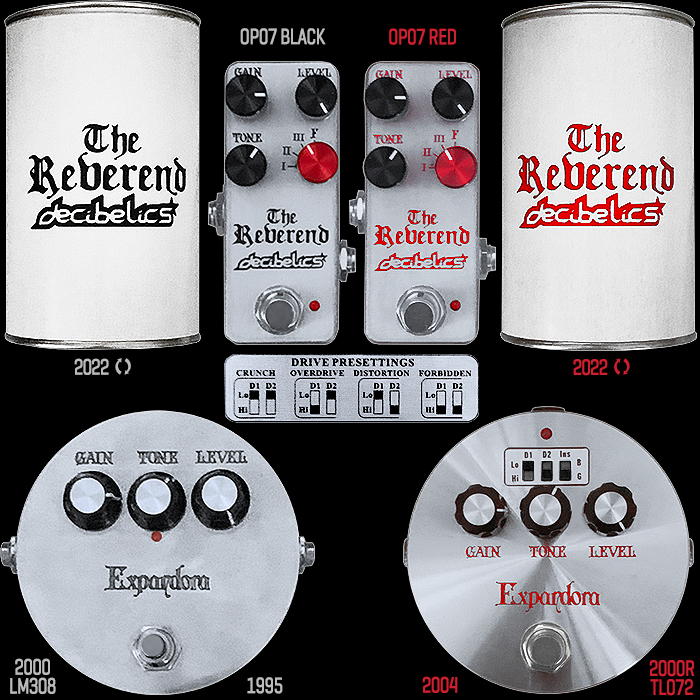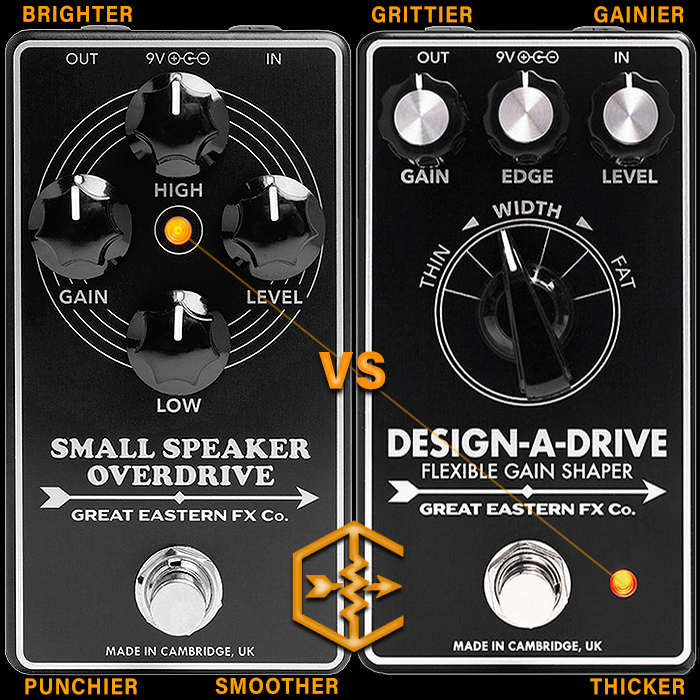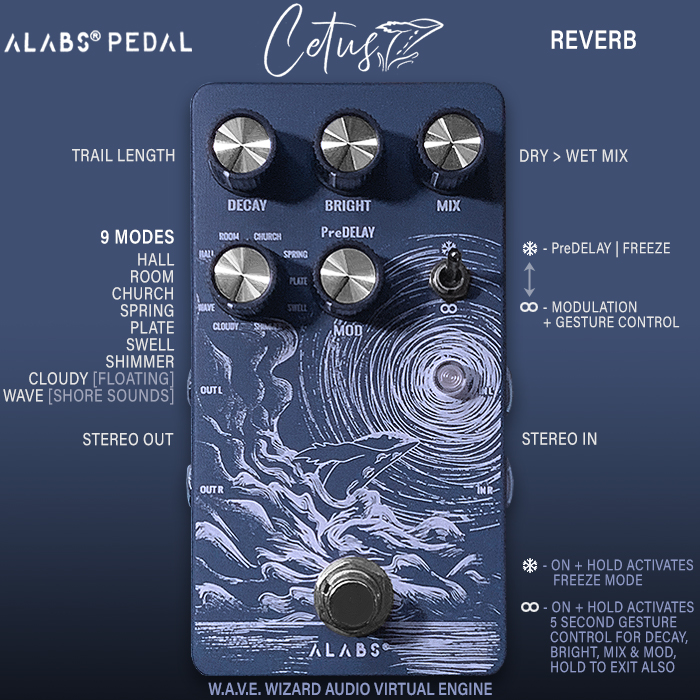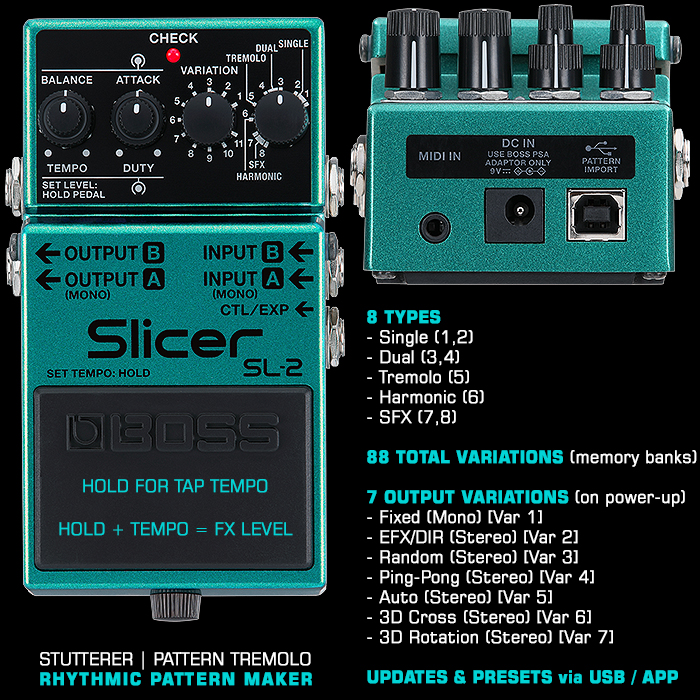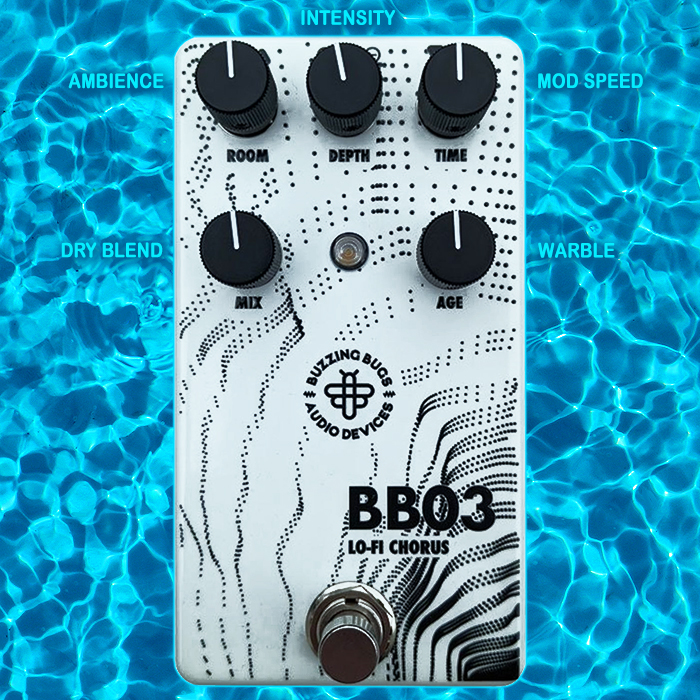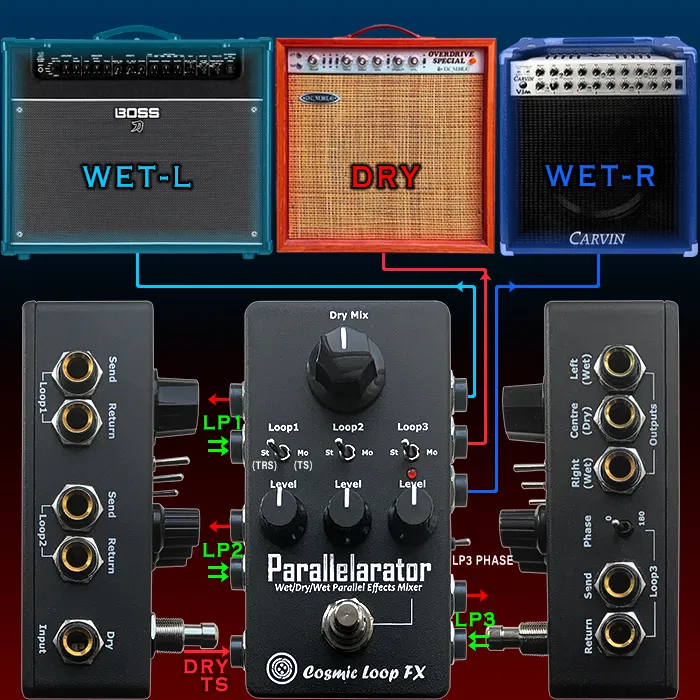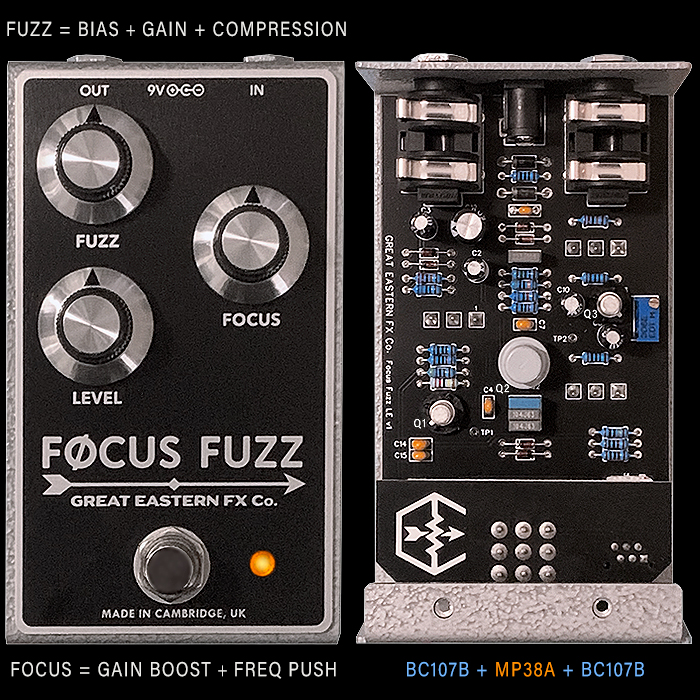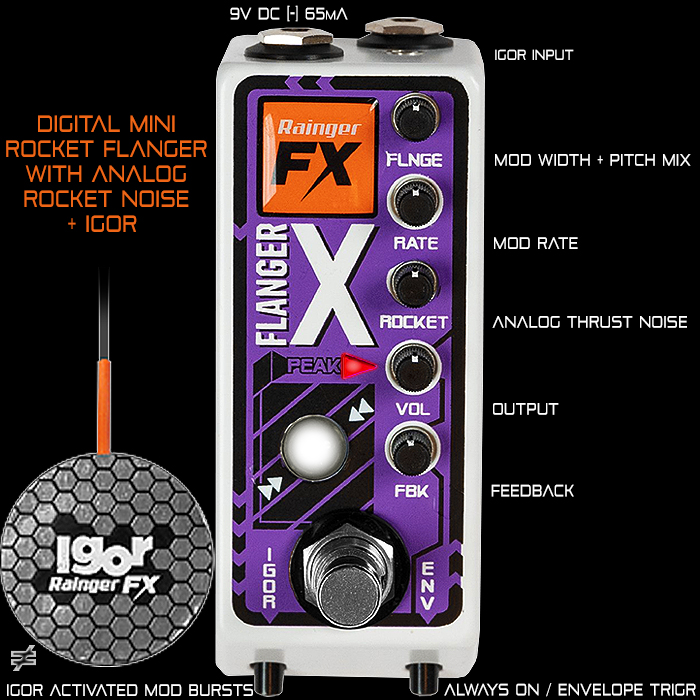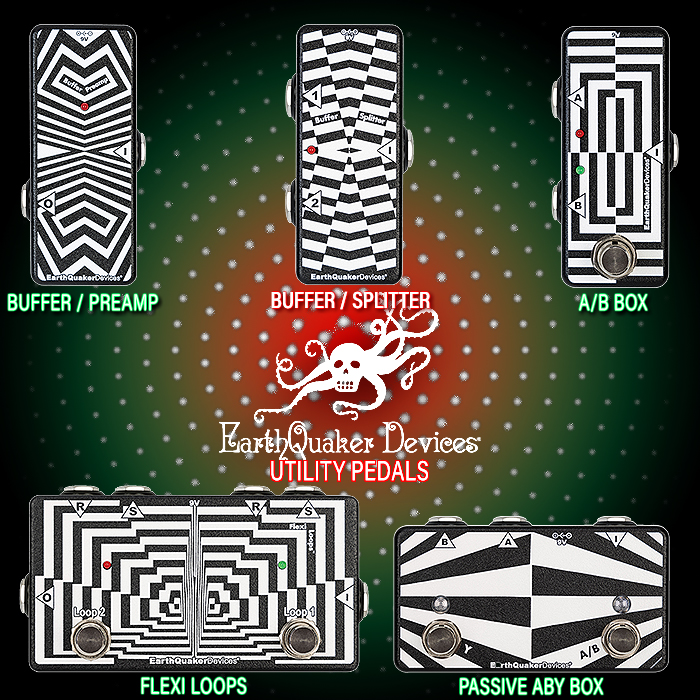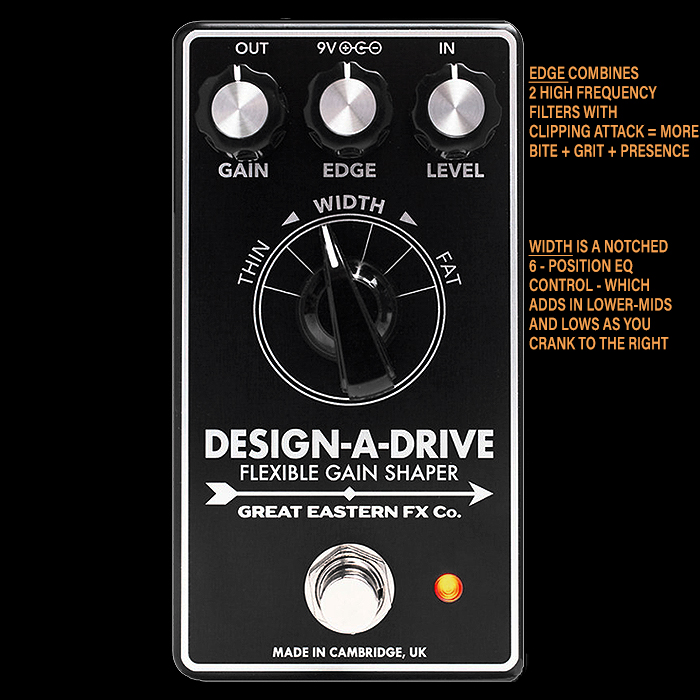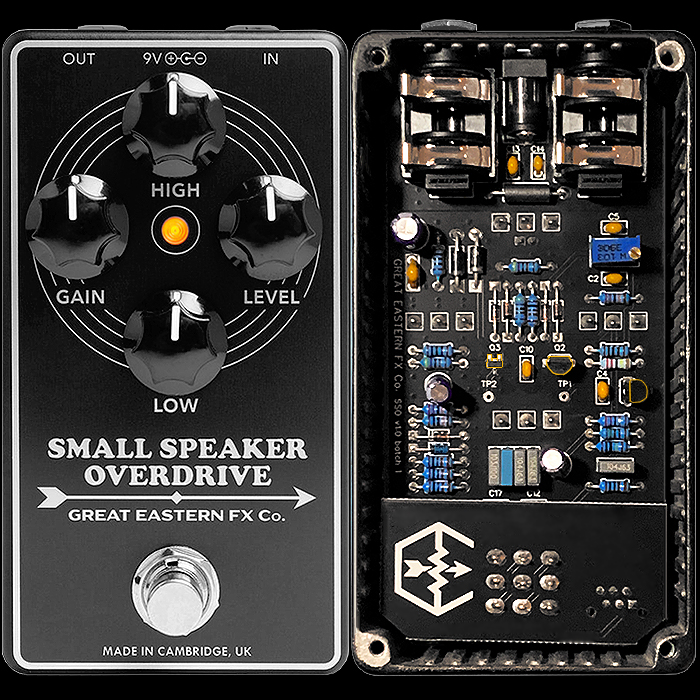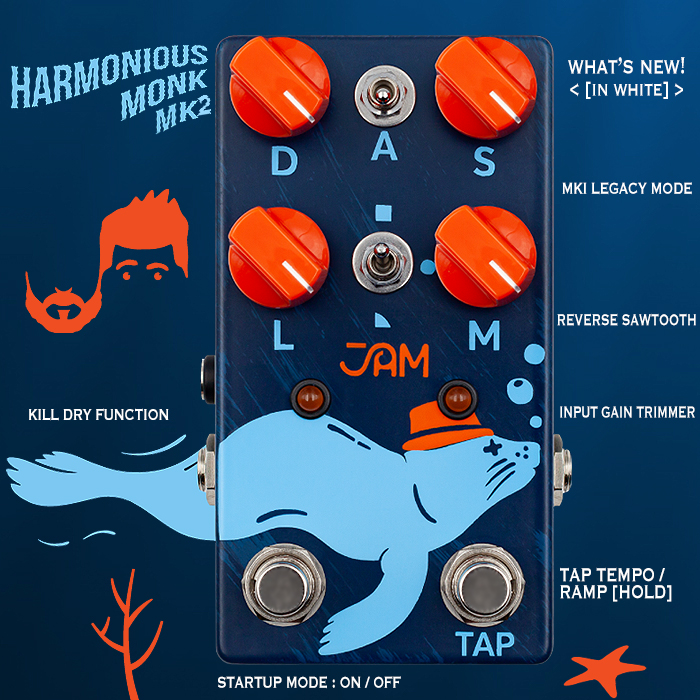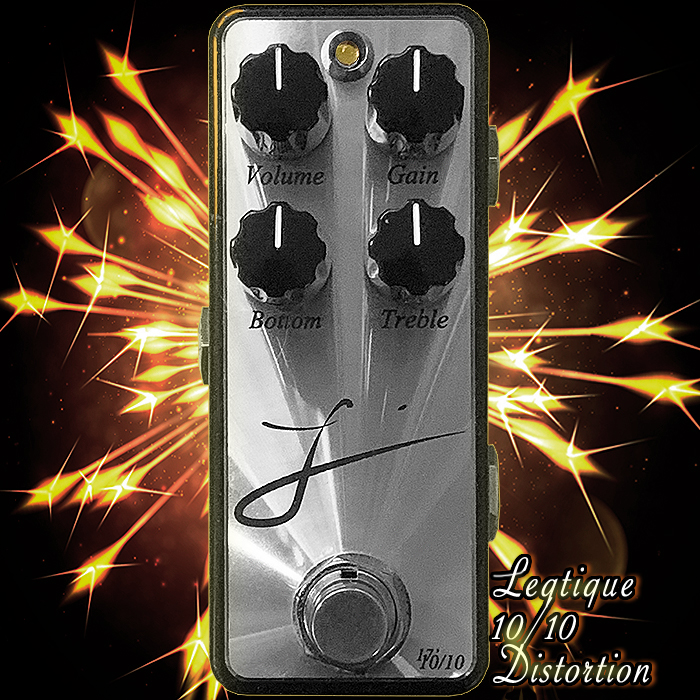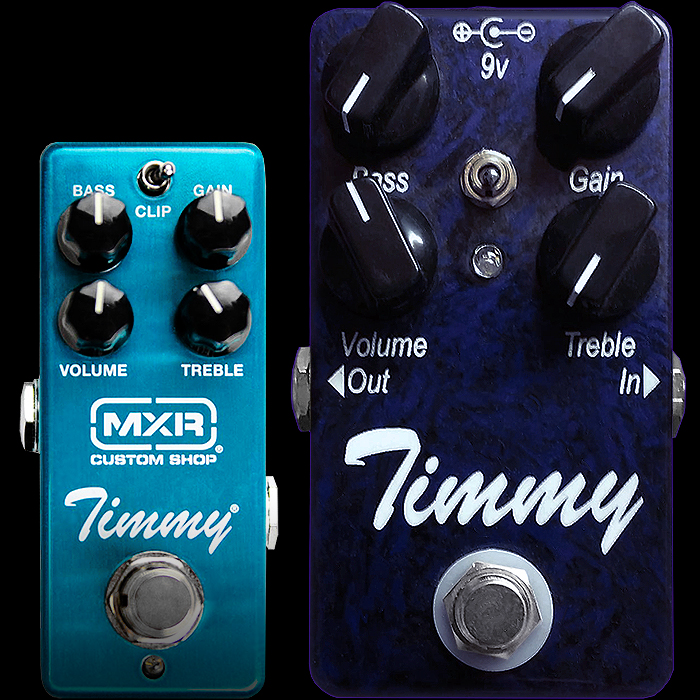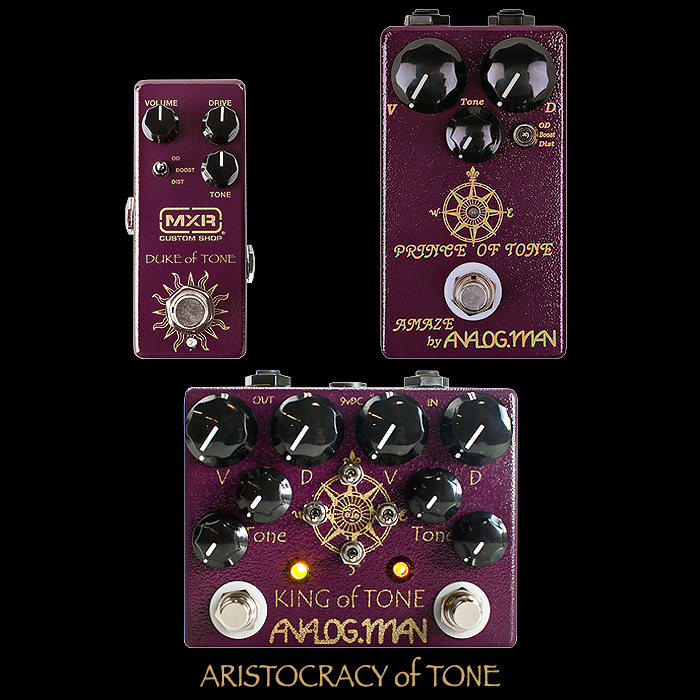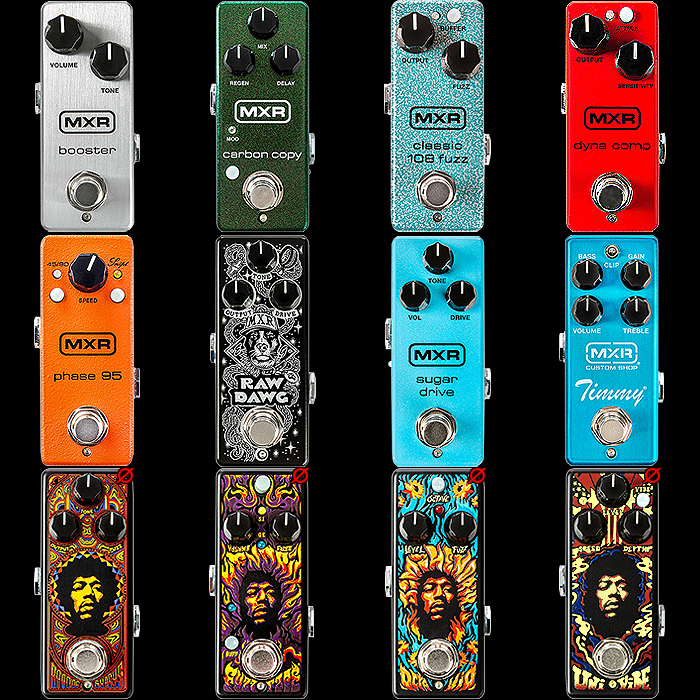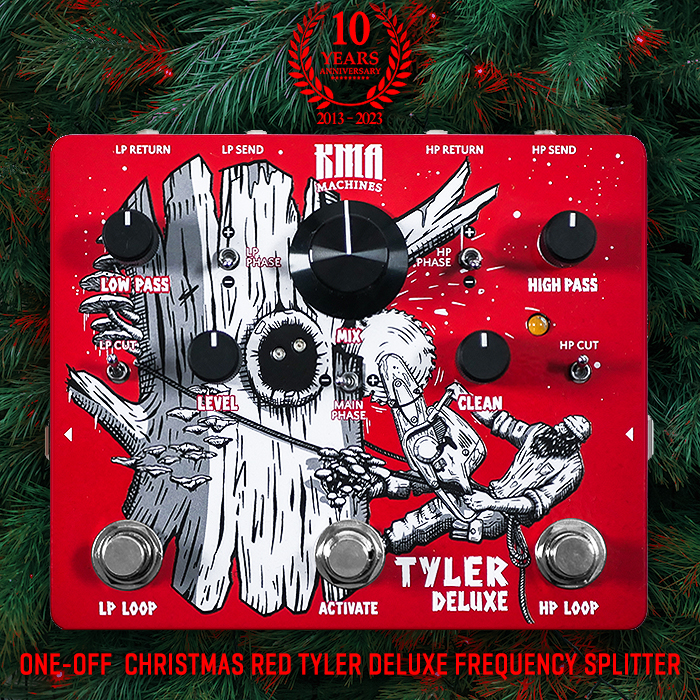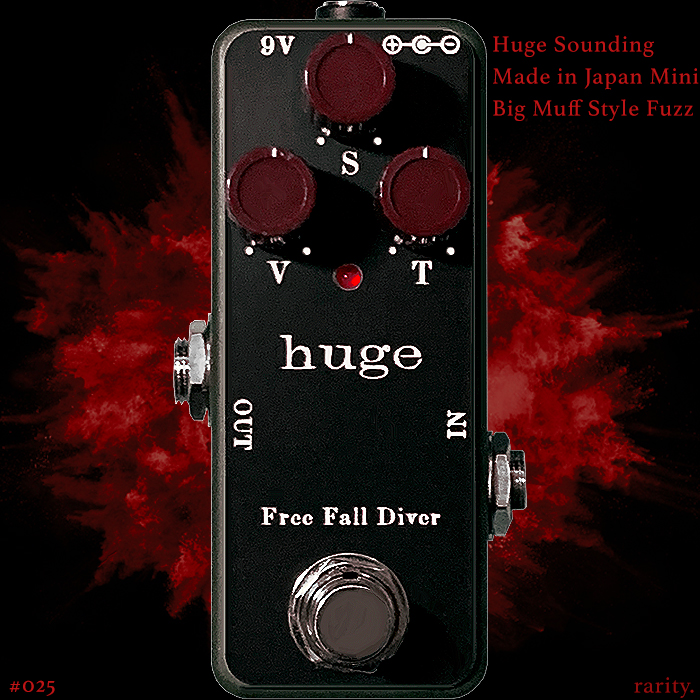Great Eastern FX Co.'s XO Variable Crossover Pedal is a wonderfully Creative and Experimental Pedal Splicer!
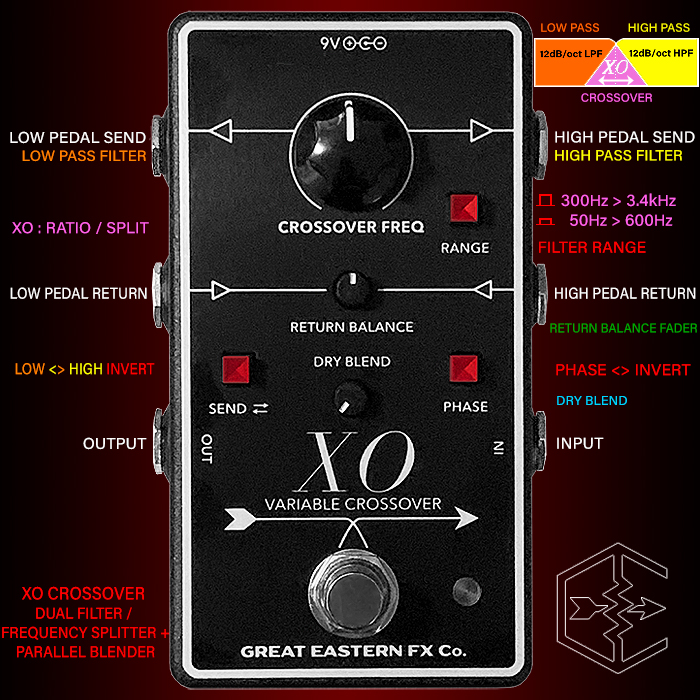
The XO Variable Crossover essentially allows you to combine the Lower Frequencies of one pedal with the Higher Frequencies of another - blend them in parallel, and create entirely new textures and tones through that specific pedal combination - and by varying the centre point / mix of each side.
So you have in effect a High Pass Filter on the Right Channel - which shaves off all Lower Frequencies beyond / below the Threshold / Centre Point you set on the Crossover Frequency Knob, and the Left Channel has a Low Pass Filter - which shaves off everything above the Centre Point.
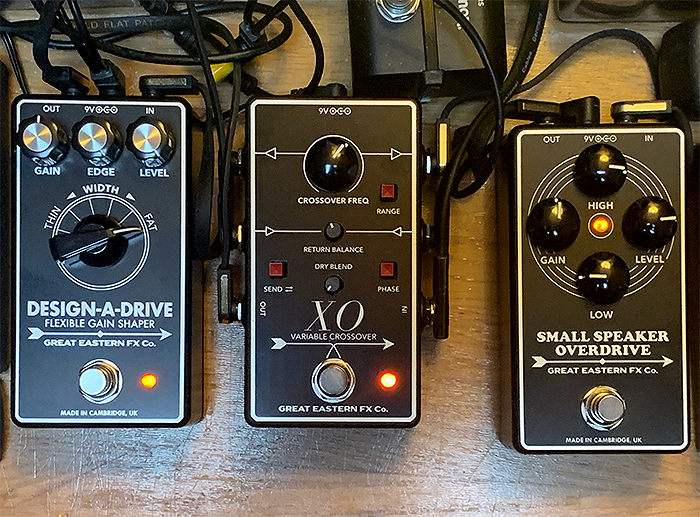
The Crossover Frequency knob allows you to move and adjust the centre crossover point - to give you the best balance of Highs and Lows. And the corresponding Range Button sets Filter Range - with the Upper State more suitable for Guitar, and the lower state for Bass.
The Return Balance allows you to better Blend the output of both the sides - as one side might be louder or more prominent than the other - and that knob allows you to bring things into unity.
The 3rd row starts with a Send push-button - which allows you to flip the filters to each opposite pedal - which delivers intriguing alternative textures and tones, in fact the Phase push button has another similar effect. At the most basic level you're getting different tonal and textural variations through each of those options.
Finally, as initially suggested by Guitar Nerds' Joe Branton we also have a Dry Blend control - which allows you to further mix in the pre-send signal. Something particularly useful for Bass players of course.
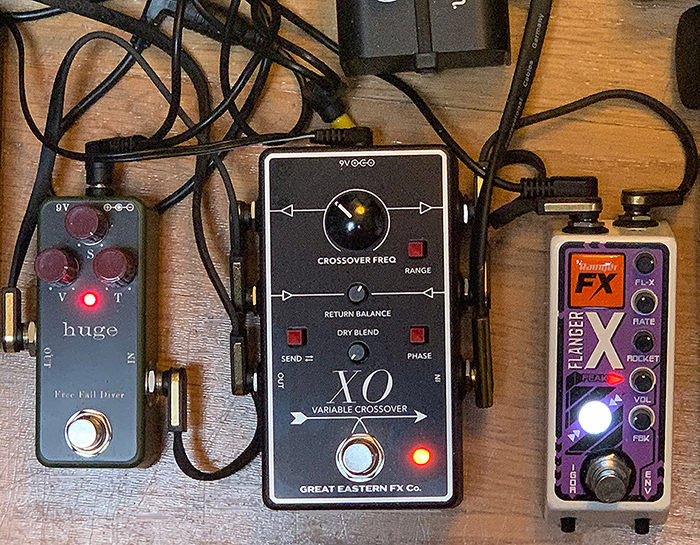
Controls - Crossover Frequency (Ratio, Low/High Split), Range Button : UP 300Hz > 3.4kHz / DOWN 50Hz > 600Hz, Return Balance (Output Level Fader), Send Button <> : Invert Low <> High Channels, Dry Blend, Phase Button : Invert Phase (High and Low Channels in or out of Phase).
Ports : 9V-18V DC [-] 100mA, Low Pedal Send, Low Pedal Return, High Pedal Send, High Pedal Return, Input, Output.
The XO Crossover has numerous Use Cases beyond its core Low / High Frequency Splitting and Parallel Blending, as David sets out in his very thorough and richly detailed manual.
XO Variable Crossover Key Use Cases
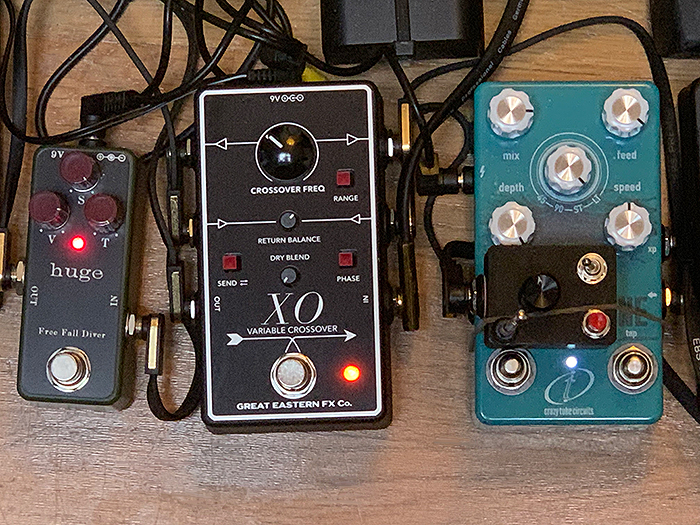
- Twin Pedal Splicer
- Twin Pedal Augmented Blender
- Twin Pedal Frequency Splitter
- High Loop Only Filter / EQ
- Low Loop Only Filter / EQ
- High Pass + Low Pass Filter
- Use either of the High / Low Pedal Sends as your Output
- Plug a spare patch cable into either Send socket to Mute that Channel
- Deploy as a Tilt EQ - with nothing inserted into either Send or Return Jack Sockets
- Use as Buffer / Line Driver
- Use as core Signal Mixer / Signal Splitter
10 Great Pedal Combinations!

I had a lot of fun combining a wide variety of pedals, and these are some of my favourite combinations that worked particularly well :
- Great Eastern Design-a-Drive <> Great Eastern Small Speaker Overdrive
- Free Fall Diver Huge (Bassy Big Muff) <> Rainger FX Flanger X
- Free Fall Diver Huge (Bassy Big Muff) <> Buzzing Bugs BB03 Lo-Fi Chorus
- Free Fall Diver Huge (Bassy Big Muff) <> Crazy Tube Circuits Cyclone Phaser
- Free Fall Diver Huge (Bassy Big Muff) <> MXR Duke of Tone Mini (Bluesbreaker)
- Hamstead Soundworks Subspace Ge Intergalactic Driver <> Catalinbread Heliotrope Harmonic Pixelator
- Hello Sailor Effects Anchor Driver <> SolidGoldFX Aurras VibraPhase
- Leqtique 10/10 Distortion (Plexi / JCM800) <> MXR Timmy Mini
- JAM Pedals Harmonious Monk Harmonic Tremolo <> Boss SL-2 Slicer Pattern Tremolo
- Decibelics The Reverend (Mini Expandora) <> ALABS Audio Cetus Reverb
Fundamentally you get the most satisfaction when you combine pedals where one tends to have a higher frequencies / brighter profile, and the other has a lower frequency / thicker / darker focus. So you need to select complementary pedals which best match those particular characteristics to get optimal results.
You can combine pretty much 2 of anything and you will get new and interesting outputs. A great way to discover new tones - but also to get more utility and variety out of your existing roster of pedals. I've become quite adept of triggering those small push-buttons with my big toe too - so I can quickly and fairly dynamically switch gears on the fly as such.
The Great Easter XO Variable Crossover genuinely opens up your pedal cabinet and board to entirely new possibilities. I've always loved the concept of being able to mix pedals in parallel - and with those polarised filters on each channel you can mix them up in the most optimal and creative of fashions.
David's really delivered a killer pedal here - that is as perfect an execution as you could expect for this manner of concept - all brought together in the most straight-forward intuitive and pedalboard-friendly of formats.
A bassy overdrive / distortion combines beautifully with almost anything - which is why I used the Free Fall Diver Huge so much here - that's just the most wonderfully versatile pedal for this exercise - as is Great Eastern's own Design-a-Drive with the Thickness control prominent!
The options really are endless here for different pedal combinations - and the emphasis here is on sonic exploration, and having even more with with your pedal collection.
The XO Variable Crossover in General Use (on Guitar)

Do not be afraid to try new and unusual pairings - and in particular you should always liberally Flip the Send Channels and the Phase push-buttons for every combination you try.
As a guitar player I entirely stayed within the 300Hz > 3.4kHz Range - the lower register never did anything for me besides make the output sound worse. Sometimes a Send or Phase Inversion will reveal additional and alternative interesting textures - in fact most of the time you get interesting variations.
I also tried the Dry Blend control for various applications - where I feel that is more useful for Bass players or say more specialist applications. Much like with the lower Range register - the Dry Blend really did nothing for me either - every time I used those control options they made the output sound somewhat diminished!
Note also that the Return Balance is more for me a fine-tuning function - as I feel it's important to set proportional Unity level balance on each of the inserted pedals first - that invariable delivers better results - but it's nice to have the Return Balance option - to tweak and refine things further on the fly.
Even though not all the features and use cases are specificially pertinent to my setup or playing preferences, I would not have this device any other way - it truly has the perfect and absolutely right complement of controls. Where each of those works brilliantly for set applications, while some inevitable lean more towards Guitar players, and others towards Bass Players - each will find their own optimal range and specific benefits in using this pedal.
Available for Order Now!

The XO Variable Crossover Pedal is available for order from the Great Eastern FX Co. Webstore where it goes for a very reasonable £229 | $279 | €279. Also available at a number of select International Dealers.
This pedal is a genuine joy to deploy, and far removed from the vast majority of utility pedal experiences. This is really its own genre. There are other cool parallel blenders out there - like say TheGigRig's Wetter Box - but nothing functions quite like the XO Variable Crossover - with its smart dual filters. I would quite like to see a version of this with TRS Jacks - so you can combined Stereo Pedals too - that would be really cool to see as a V2 iteration.
As is though, the XO Variable Crossover is pretty much perfect - and indeed works pretty much perfectly too!
For anyone stuck in a creative rut - this is your next inspiration machine!
Demos



















